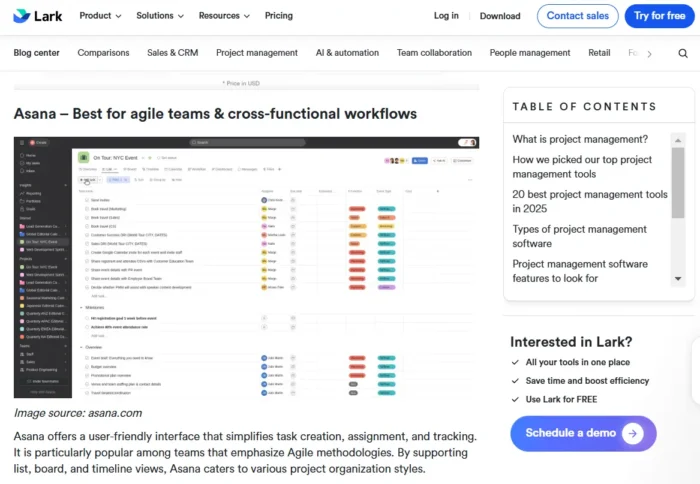Google Shares 6 Tips For Ecommerce Search Results via @sejournal, @martinibuster
Google shares six ways you can make your ecommerce site stand out from competitors on search results pages. The post Google Shares 6 Tips For Ecommerce Search Results appeared first on Search Engine Journal.

Google published a new video offering six tips for how to make ecommerce sites eligible for special presentations in the search results.
The video began by highlighting three key elements that help ecommerce product pages stand out:
Images help site visitors understand products Star ratings increase trust Pricing and availability helps shoppers choose between sellersSome of those elements depend on product structured data to make them eligible for enhanced listings, while others require participation in Google’s Merchant Center Feed.
1. Title Tags
Kent discusses title links, the links shown in the Search Engine Results Pages (SERPs) that are generated from webpage title tags.
He explains that if the title element doesn’t adequately describe what the webpage is about that Google will rewrite it, using content from the heading at the top of the page or even the anchor text from links to the webpage.
He also advises taking extra care with automated product title tags to ensure there is no duplicate content or missing information.
“A good title link can greatly help users understand your offering, bringing quality traffic to your site.
…Low quality title links can harm a users’s impression of your site.”
Alan cautions against using dynamically generated title tags to add availability or price data to the title tag because there’s a lag between when the title tag is updated and when Google eventually shows the updated title link in the SERPs. By this time, the information may be outdated.
He recommends using a Google site: search to double-check what the title tags might look like when displayed in the search results.
2. Include High Quality Images
High quality images are a user experience consideration in that they help potential customers make up their minds about a product.
Alan Kent shared:
“We’ve observed that users generally respond well to high quality images and recommend that key images be at least 1200 pixels wide.”
He recommends auditing the site for low quality images and replacing them with higher quality photos.
Kent also advised checking the Max Image Preview meta data because it guides Google on how to show those images in the SERPs.
Lastly, he encourages using product structured data to help Google identify the correct images to show in the search results.
Many businesses consider things like images in terms of how they may help their webpage rank better in the search results.
But it’s more productive to consider product images in terms of how they help users decide to purchase a product.
That means if there’s a question about the size of the product, then it might make sense to juxtapose the product with an everyday object approximately the same size.
Different angles can be helpful, as can showing what clothing looks like on a model, what furniture may look like in a room, or how fencing might look attractive in a yard.
3. Share Rich Product Data
Structured data helps Google better understand webpages and makes them eligible to be displayed as rich results, what he referred to as “special presentation treatments” in the search results.
The following are essential elements for product structured data to include:
Product title Description Images Ratings Price AvailabilityCheck Google’s product structured data guidelines to see what properties are required and which are optional. The structured data guidelines are constantly changing, which can cause a product page to lose its enhanced listing in the search results when the structured data no longer conforms to Google’s requirements.
For troubleshooting, use the Search Console URL Indexing tool to check if the page is indexed and then use the Rich Results Test Tool to see if there are any structured data errors.
4. Share Price Drop Data
Sharing pricing information with Google can make the product page eligible for a special price drop presentation in the search results, which may call attention to it.
Appearing in the search results with a special price drop presentation isn’t guaranteed.
To make a page eligible for price drop rich results, you must include the Offer property in the product structured data that is a specific price point and not a price range.
5. Identify Products You Sell
This tip advises using accurate product identifiers such as GTIN identifiers, using a combination of Google Merchant Center feed and product structured data.
Following this advice can make a product eligible for listings such as the product carousels.
6. Create a Business Profile
Lastly, Kent recommends creating a Google Business Profile if the business has a physical presence.
“This can be done via the Google Business Profile Manager.”
Following this tip makes a site eligible for a special listing alongside the search results.
This type of listing is only available for businesses with a physical store presence or a covered service area.
Citations
Resources cited
Control your title links in search results
Robots.txt meta tag specification
Google Search gallery of structured data usage
Product structured data, including pricing information
Register your Google business profile
Watch the Google YouTube Video
How to Make Your Ecommerce Website Stand Out in Google Search (6 Tips)
Featured image screenshot by the author

 JimMin
JimMin 







![A Complex Art: Marketing to the Different Funnel Stages [Podcast]](https://cdn.searchenginejournal.com/wp-content/uploads/2021/03/funnel-sej-603d692871529.png)
![What’s A Good Google Ads CTR/CPC/CPA In 2022? [STUDY] via @sejournal, @brookeosmundson](https://cdn.searchenginejournal.com/wp-content/uploads/2022/02/whats-a-good-google-ads-ctr_cpc_cpa-in-2022-621888e74e6dd-sej.png)























